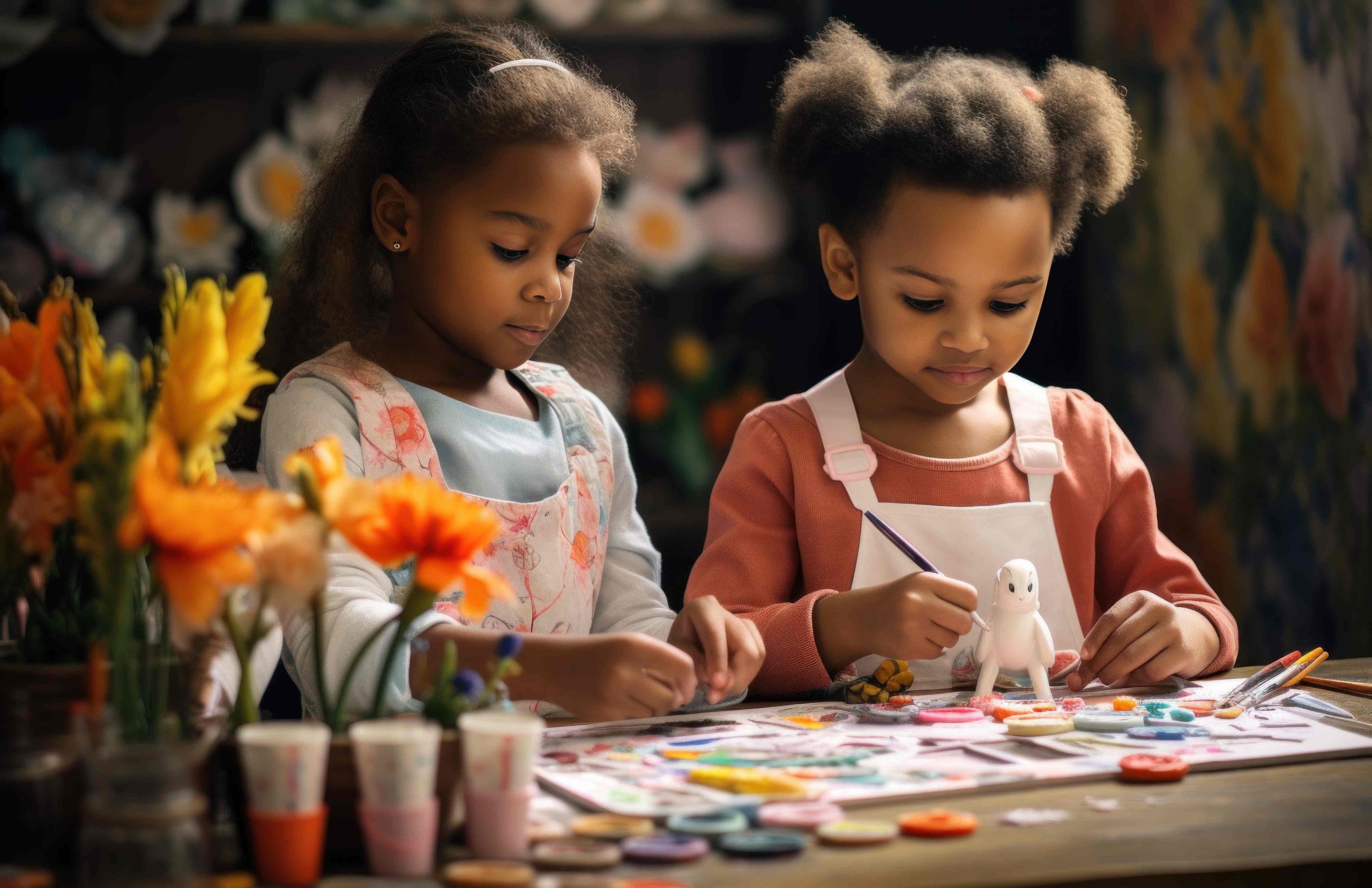
Building Skills and Confidence: Why Crafting Is Essential for Kids
Crafting for Special Occasions
Celebrating Special Events Through Crafting Crafting can also be a wonderful way to celebrate special occasions and events:- Creating Homemade Gifts: Preschoolers can craft gifts for family and friends to celebrate special occasions such as birthdays or holidays.
- Decorating for Festivities: Utilize crafting to decorate for special occasions like Christmas or Halloween, involving preschoolers in creating festive decor.
- Collaborative Projects: Crafting encourages collaboration and teamwork among preschoolers, such as working together on large-scale projects like murals or dioramas.
Crafting for Sensory Development
Enhancing Sensory Skills Through Crafting Crafting supports sensory development in preschoolers:- Exploring Different Textures: Introduce varied textures like felt, pipe cleaners, and fabric to help preschoolers develop their sense of touch and explore tactile sensations.
- Creating Aromatherapy Crafts: Use materials with pleasant scents such as lavender or vanilla to stimulate the sense of smell and promote relaxation.
- Experimenting with Colors: Engage preschoolers in crafting with different colors to develop their sense of sight and learn about color mixing and blending.
Crafting for Gross Motor Development
Supporting Gross Motor Skills Through Crafting Crafting also aids in gross motor development in preschoolers:- Utilizing Large Materials: Use oversized materials like cardboard boxes or large paper to help develop gross motor skills such as reaching, stretching, and bending.
- Creating 3D Crafts: Crafting three-dimensional objects like paper mache or clay sculptures helps preschoolers develop spatial awareness and hand-eye coordination.
- Incorporating Movement: Include movement in crafting activities, such as dancing while painting or doing yoga poses while creating, to help preschoolers develop gross motor skills, strength, and flexibility.
Crafting for Social Development
Fostering Social Skills Through Crafting Crafting supports social development in preschoolers:- Encouraging Collaboration: Crafting fosters collaboration and teamwork among preschoolers, aiding in the development of social skills like communication, sharing, and compromise.
- Developing Empathy: Crafting encourages empathy by prompting preschoolers to create crafts for others, fostering kindness and understanding.
- Promoting Cultural Awareness: Incorporating crafts from different cultures and backgrounds promotes cultural awareness, helping preschoolers appreciate diversity and build respect for others.
Crafting for Environmental Awareness
Promoting Environmental Consciousness Through Crafting Crafting can also promote environmental awareness and sustainability in preschoolers:- Utilizing Recycled Materials: Crafting with recycled materials like cardboard tubes, egg cartons, and newspaper promotes eco-friendly practices and reduces waste.
- Creating Nature Crafts: Crafting with natural materials like leaves, sticks, and flowers helps preschoolers develop an appreciation for nature and connect with the environment.
- Encouraging Upcycling: Encouraging preschoolers to upcycle items that might otherwise be thrown away, such as turning an old t-shirt into a tote bag, promotes sustainability and a sense of responsibility for the environment.
Crafting for Expressive Arts Therapy
Utilizing Crafting for Emotional Expression and Therapy Crafting can serve as a therapeutic tool for preschoolers:- Creating Art Journals: Art journals provide a safe outlet for preschoolers to express their thoughts and feelings creatively.
- Using Symbolic Art: Creating symbolic art, such as drawing emotions or representing difficult situations visually, helps preschoolers explore their feelings and gain insight.
- Encouraging Free Expression: Encouraging preschoolers to create without limitations or expectations helps them tap into their imagination and express themselves freely without fear.
Crafting for Cognitive Development
Enhancing Cognitive Skills Through Crafting Crafting supports cognitive development in preschoolers:- Developing Problem-Solving Skills: Crafting encourages preschoolers to think creatively and find solutions to challenges, enhancing their problem-solving abilities.
- Improving Attention Span: Engaging in crafting activities helps improve preschoolers’ attention span and focus.
- Enhancing Memory: Creating crafts enhances preschoolers’ memory as they learn instructions, follow steps, and recall information.
Crafting for Fine Motor Skills
Developing Fine Motor Skills Through Crafting Crafting also supports the development of fine motor skills in preschoolers:- Using Small Materials: Utilize small materials like beads, buttons, and sequins to help preschoolers develop fine motor skills and hand-eye coordination.
- Encouraging Precision: Encourage preschoolers to create crafts that require precision, such as cutting along a dotted line or following a specific pattern, to develop fine motor skills and dexterity.
- Practicing Writing and Drawing: Engage preschoolers in crafting activities involving writing or drawing, such as creating cards or making a picture book, to develop fine motor skills and strengthen hand muscles.
Crafting for Language Development
Supporting Language Development Through Crafting Crafting supports language development in preschoolers:- Encouraging Storytelling: Crafting encourages storytelling by creating crafts that tell a story or using crafts as props for imaginative play.
- Building Vocabulary: Crafting helps build preschoolers’ vocabulary as they learn names of materials, tools, and techniques.
- Developing Listening Skills: Crafting helps develop preschoolers’ listening skills as they follow instructions and communicate during the crafting process.
Conclusion
Summary of Crafting Benefits for Preschoolers Crafting is a beneficial and enjoyable activity for preschoolers, offering a range of developmental benefits. By engaging in crafting activities, preschoolers can enhance creativity, fine motor skills, cognitive abilities, and emotional development while having fun. Crafting also fosters self-expression, imagination, and problem-solving skills. Additionally, crafting can serve as a bonding activity between parents, teachers, and preschoolers. Crafting activities are relatively inexpensive and easy to set up, making them accessible to everyone. They can be done at home or in a classroom setting, with countless age-appropriate ideas available online. Crafting activities can be tailored to suit each preschooler’s needs and interests, catering to specific learning styles. In conclusion, crafting is an essential activity for preschoolers, providing numerous developmental benefits. It enhances creativity, fine motor skills, cognitive abilities, and emotional well-being. By incorporating crafting into a preschooler’s routine, parents and teachers can help them learn, grow, and have fun simultaneously.

